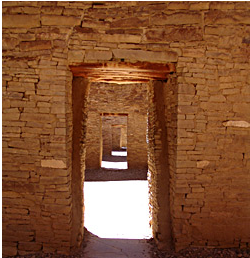Publication Date
5-1-2015
Abstract
This is an ethnographic study of the boi-bumbá festival of Manaus, capital of the Brazilian state of Amazonas. I examine this traditional Brazilian folkloric performance as it is being reworked to express a modern, global identity for urban Amazonians. Long seen as a key site to understand racial relations in Brazil, the boi-bumbá festival tells the story of the death and resurrection of a ranchers beloved bull. The earliest recorded versions of the Brazilian bull festival portray the economic and social relations on an 18th century colonial cattle ranch in the country's northeast. When the festival came to be performed in the Amazon region its focus shifted to reflect local understandings of racial relations. I explore how the version performed in the state of Amazonas has come to valorize the poor, rural, mixed-race Amazonians known as Caboclos. Although the majority of inhabitants of the region live in urban areas and engage in wage labor, the region is still popularly imagined as a 'place that time forgot': a natural area largely free of modern human intervention. In recent years Manaus has become known as 'the gateway to the Amazon,' a jumping-off point for the substantial number of tourists who come each year in search of 'authentic' experiences. Such a thirst for the authentic is frequently a byproduct of capitalism itself, often manifesting as a nostalgia for past times and places that are imagined to have been simpler and more satisfying. What such tourism rarely considers is that inhabitants of Manaus itself are also searching for authenticity, as over the past fifty years their city has transformed from an isolated and stagnant jungle outpost to a center of manufacture, commerce, and tourism, recently called, 'Brazil's China.' This dissertation discusses how the boi-bumbá of Amazonas rose to stratospheric popularity as a reaction to the urbanization and industrialization of the area, and serves as a vehicle for collective memory and nostalgia. In part, this manifests as individuals self-identify as 'Caboclo,' renovating what had previously been a pejorative label. Using Bakhtin's conception of the 'chronotope,' (a referenced location in space and time, populated by people of a particular social configuration) I demonstrate how boi-bumbá performances, both those held in the city's amphitheater as well as in tourist venues, create a kind of historical consciousness in the present. Through nested chronotopic representations linking the viewer to the historical and mythic time-spaces and times in the nation's history, the boi-bumbá reaffirms its place as the 'most Brazilian' of folkloric dramas, while situating the Amazonian Caboclo both geographically and historically. Collapsing all of Brazil into the boi-bumbá and all of the boi-bumbá into the Amazonian Caboclo, this folkloric performance resists national discourses that regard the Amazon region as peripheral. This dissertation sheds light on the ways today's urban Amazonians are using this traditional festival to challenge the cultural and economic hegemony of the Brazilian southeast.'
Project Sponsors
Wenner Gren Foundation University of New Mexico Latin American and Iberian Institute
Document Type
Dissertation
Language
English
Degree Name
Anthropology
Level of Degree
Doctoral
Department Name
Anthropology
First Committee Member (Chair)
Suzanne R. Oakdale
Second Committee Member
David W. Dinwoodie
Third Committee Member
Louise A. Lamphere
Fourth Committee Member
Les W. Field
Fifth Committee Member
Janet Chernela
Recommended Citation
Watson, Margaret Kathleen. "From Rural Street Theater to Big City Extravaganza: The Meaning of the Manaus Boi-bumbá in an Urbanizing Brazil." (2015). https://digitalrepository.unm.edu/anth_etds/75

